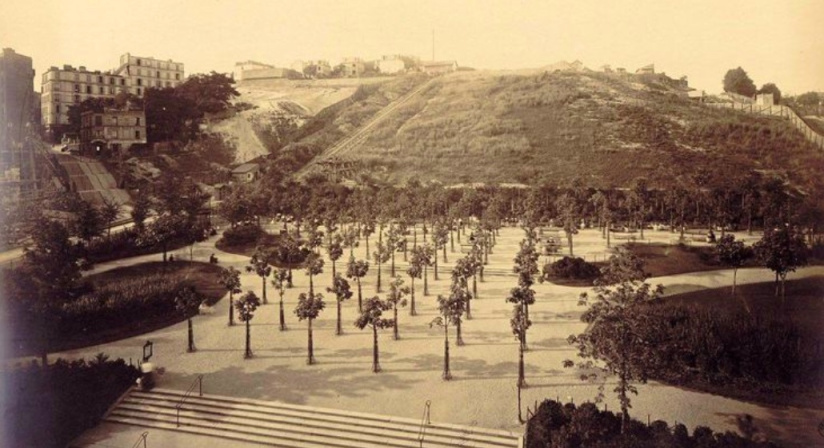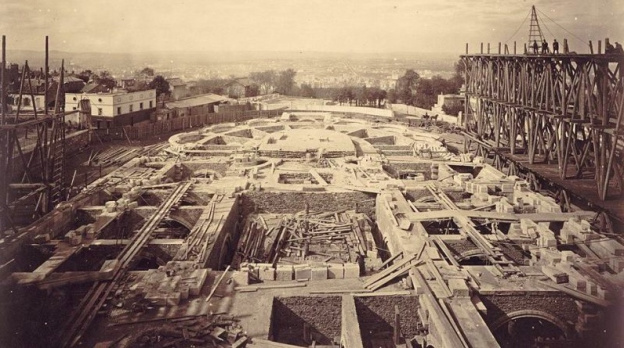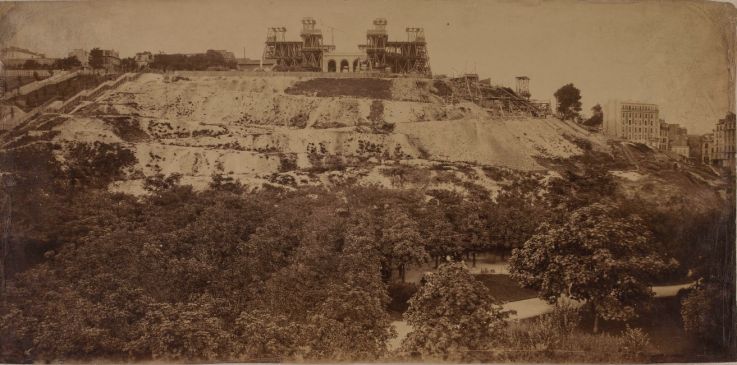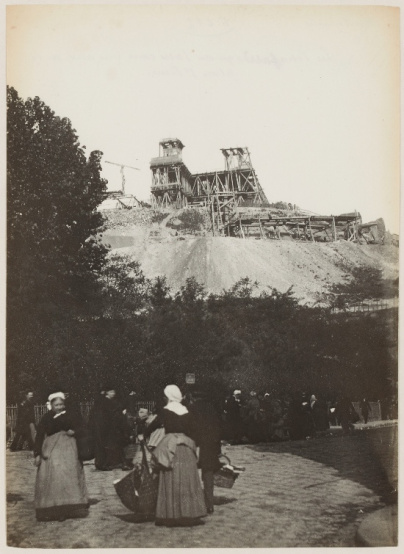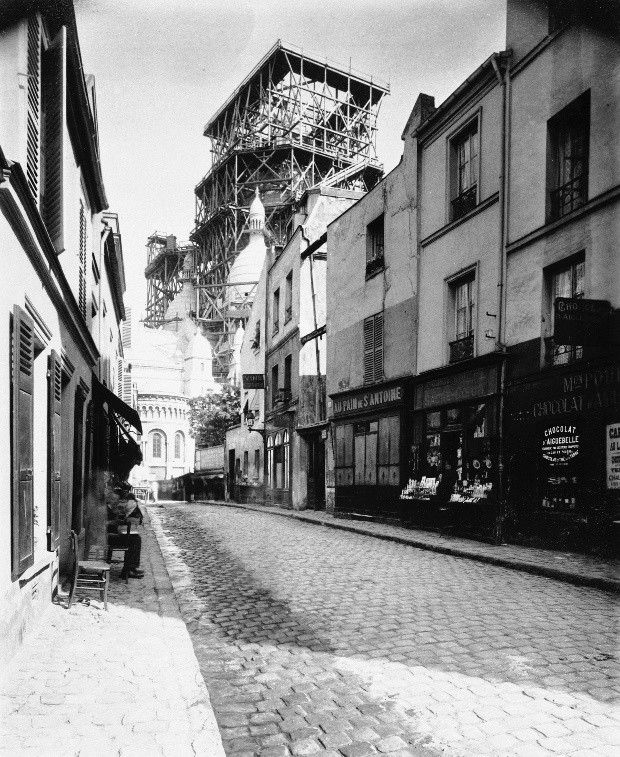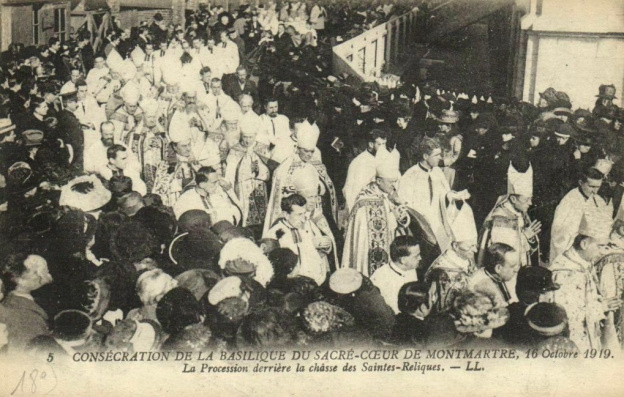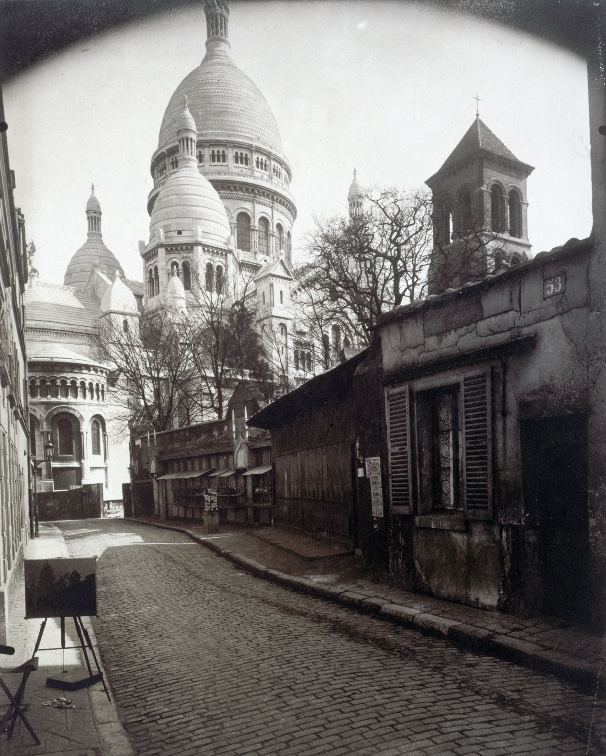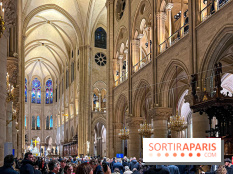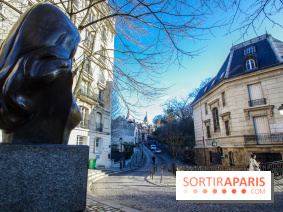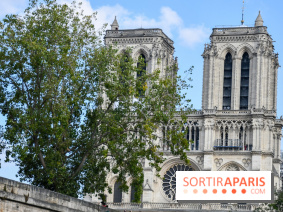On Thursday October 16, 1919, the Sacré-Coeur de Montmartre church was consecrated by Cardinal Vico in the presence of theArchbishop of Paris, and elevated to the rank of basilica. Construction began in 1875, but was not completed until 1923.
The Butte Montmartre has always been considered a place of worship, from the earliest Gaulish rituals to the construction ofSaint-Pierre church in the 12th century as part of the Royal Abbey of Montmartre, from the beheading of Saint-Denis in the 3rd century to the Gallo-Roman temples erected to the glory of Mercury and Mars. For the record, the hill's name "Montmartre" derives from Mons Martis ("Mount of Mars"), reinterpreted over the years as Mons Martyrum ("Mount of Martyrs") then Mont de Martre (marten meaning "martyr" in Old French).
On September 4, 1870, the day the Third Republic was proclaimed, when France was invaded by Prussian armies and Paris was about to be besieged any day now, several churchmen put forward the idea of erecting a sanctuary dedicated to the cult of Jesus Christ in the heart of the capital, toatone for France's sins and put an end to what they saw as divine punishment in response to a century of decay that had begun with the Revolution of 1789.
The idea, spearheaded by philanthropist Alexandre Legentil, resonated nationwide, and alongside his brother-in-law, Parisian painter and notable Hubert de Fleury, Alexandre Legentil began the process of building this edifice to the glory of Christ. Together, at the end of 1872, the two gentlemen appealed to the FrenchNational Assembly for the church to be recognized as being ofpublic utility, so as to acquire the necessary land, owned by the town and numerous private individuals.
The largely royalist, conservative and Catholic National Assembly, elected in February 1871, voted by a majority in favor of the public utility law on July 24, 1873. For many, this decision was taken toatone for the crimes committed during the Paris Commune, and thus establish the new "moral order" of a clerical France promoted by the conservatives.
Indeed, the Butte Montmartre is considered the starting point of theCommune's popular insurrection, from March to May 1871, with the famous "cannon affair". Even today, many Parisians believe that the Sacré-Cœur was "built on the blood of the Communards". Hubert de Fleury, himself, declared at the laying of the building's foundation stone: "It's where the Commune began, where generals Clément-Thomas and Lecomte were murdered, that the Sacré-Cœur church rises! We remember this hillock lined with cannons, criss-crossed by drunken hooligans, inhabited by a population that seemed hostile to all religious ideas, and whose hatred of the Church above all seemed to animate them."
The law of July 24, 1873 gave Monseigneur Guibert, Archbishop of Paris, the right to acquire the land on Montmartre hill byexpropriation, if necessary. Until then, the land behind Saint-Pierre church had been occupied by guinguettes, jardinets and a fairground. That same year, a competition was organized by the Œuvre du Vœu National committee and the Archbishop of Paris to select the architect for the project.
A number of requirements were imposed on the candidates: the site, the Montmartre hillock; the budget, limited to 7 million francs; the construction of a crypt; and the presence of a monumental statue of the Sacred Heart, visible from afar and placed outside the building.Architect Paul Abadie won the competition against 77 other entries, some of which were led by leading figures in architecture and Grand Prix de Rome winners. Abadie designed a Romanesque-Byzantine basilica with all the traditional ceremonial elements - dome, belfry and campanile - to set it apart from the neo-Baroque style in vogue at the time.
Honoré Daumet took over from Paul Abadie on his death in 1884, and was himself replaced by Charles Laisné, who enlisted the help of stained-glass artist Émile Hirsch to create the stained-glass windows. A succession of architects followed, including Henri-Pierre Rauline, Lucien Magne and Jean-Louis Hulot.
Construction of the edifice was made possible by the financial support of many devotees, thanks in particular to the " Souscription des Pierres ", which encouraged families to contribute the sum needed to purchase a stone, column or chapel, engraved with the donor's full name, initials or coat of arms. In all, almost 46 million francs were raised over half a century, thanks to donations from nearly 10 million devotees.
The first stone of travertine, an extremely fine-grained white rock that whitens in the rain, was laid on June 16, 1875 by Cardinal Guibert, Archbishop of Paris, a stone's throw from the former Moulin de la Galette. 83 shafts 33 metres deep were filled with concrete to consolidate the foundations, while 35,000m3 of loose earth was replaced by stone and cement. Less than a year later, a temporary chapel was inaugurated alongside the construction work.
Construction of the crypt began in 1878, followed by the basilica in 1881. The interior of the nave was inaugurated on June 5, 1891, at a time when the Third Republic, fundamentally anti-clergy, wanted to transform the religious edifice into a people's house or theater. Departing somewhat from Paul Abadie's initial plans, architects Rauline and Magne added neo-Renaissance elements to the ensemble, such as elongated cupolas and slender domes.
The consecration of the church was due to take place on October 17, 1914, butFrance's entry into the war postponed the event. Work was far from complete. It was not until 1912 that the 91-metre-high campanile was completed, and 1914 that the entire façade was finished.
Finally, on Thursday October 16, 1919, the Sacré-Coeur church was consecrated by Cardinal Vico, in the presence of Cardinal Amette, Archbishop of Paris, and numerous bishops, ecclesiastical dignitaries, members of the clergy, civic figures and ordinary faithful; and elevated to the rank of basilica.
Officially completed in 1923, construction of the Sacré-Coeur continued into the 1930s, with the addition of annexes, offices, dormitories and the sacristy. The stained glass windows, installed between 1903 and 1920 and destroyed during the Second World War, were later replaced by contemporary ones.
Outside the Sacré-Coeur, tourists and Parisians alike can still discover an architectural style inspired by Romanesque and Byzantine architecture, and a central dome 83 metres high, which until the construction of the Eiffel Tower was the highest point in Paris, the highest point in Paris, the campanile containing the largest bell in France, and several statues, including Joan of Arc, Christ with the Sacred Heart on his chest, and Saint-Louis, brandishing his sword in one hand and Christ's crown in the other.
Inside the basilica, the choir vault is strikingly decorated with France's largest mosaic depicting the Sacred Heart of Jesus, surrounded by the Virgin Mary and St. Michael, and, kneeling, Pope Leo XIII and Joan of Arc, created in Briare enamel by Parisian mosaicists Atelier Guilbert-Martin between 1918 and 1922. More than a dozen chapels surround the nave, while the great organs, installed in 1919, are still in place. In the basement, the crypt contains tombs, several chapels and statues of saints and the Virgin Mary.
Further information
Location
Basilica of the Sacred Heart of Montmartre
35 Rue du Chevalier de la Barre
75018 Paris 18
Access
Metro Jules Joffrin (Line 12) Pigalle (Lines 12 and 2) Anvers (Line 2)
More information
Iconographies: Header : Louis-Emile Durandelle, 1882 Square Saint-Pierre, Louis-Emile Durandelle, 1877 Louis-Emile Durandelle, 1882 Construction of the Sacré-Coeur, circa 1884, Anonymous, Musée Carnavalet Scaffolding for the Sacré-Coeur from Place Saint Pierre, Hippolyte Blancard, Musée Carnavalet Construction of the Sacré-Coeur basilica in Montmartre, view from rue du Chevalier-de-la-Barre, Eugène Atget, Musée Carnavalet Consecration of the Sacré-Coeur basilica Sacré-Coeur basilica in Montmartre. View from 53, rue du Chevalier-de-la-Barre, Eugène Atget, Musée Carnavalet
